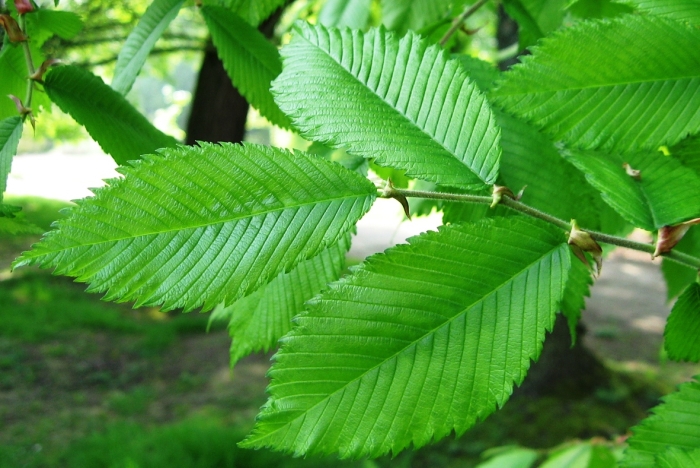Rock Elm
(Ulmus thomasii)
Rock Elm (Ulmus thomasii)
/
/

Ronnie Nijboer
CC0
Image By:
Ronnie Nijboer
Recorded By:
Copyright:
CC0
Copyright Notice:
Photo by: Ronnie Nijboer | License Type: CC0 | License URL: http://creativecommons.org/publicdomain/zero/1.0/deed.en | Uploader: OgreBot | Publisher: Wikimedia Commons | Title: Ulmus_thomasii_(meisse)_leaves_2.jpg | Notes: User created page with UploadWizard |
























Estimated Native Range
Summary
Ulmus thomasii, commonly known as Rock Elm, is a deciduous tree that can reach heights of 50–100 feet (15–30 meters) and may live up to 300 years. It is native to the northcentral and eastern United States, particularly in areas with rich, moist soils along streams and rivers. The Rock Elm is notable for its cylindrical and upright crown when forest-grown, with short branches that give it a narrower appearance than most other elms. It is often monopodial, meaning it has a single dominant stem growing straight up. The flowers are perfect, apetalous, and wind-pollinated, appearing in red-green racemes up to 40 mm (2 in) long before the leaves from March to May. The fruit is a hairy, broad ovate samara, notched at the tip, maturing in May or June into drooping clusters at the leaf bases.
The Rock Elm is valued for its hard, strong wood and resistance to splitting, making it useful for furniture and flooring. It is also appreciated for its ornamental qualities, such as the textured bark and the graceful form of its branches. In cultivation, it requires full sun and ample water, thriving in a range of soil types with varying drainage. While moderately shade-tolerant, it performs best with adequate sunlight. Gardeners should be aware that the Rock Elm can be susceptible to Dutch elm disease, though it is more resistant than some other elm species. It is also important to note that this species may become invasive outside its native range, so gardeners should consult local regulations before planting.CC BY-SA 4.0
The Rock Elm is valued for its hard, strong wood and resistance to splitting, making it useful for furniture and flooring. It is also appreciated for its ornamental qualities, such as the textured bark and the graceful form of its branches. In cultivation, it requires full sun and ample water, thriving in a range of soil types with varying drainage. While moderately shade-tolerant, it performs best with adequate sunlight. Gardeners should be aware that the Rock Elm can be susceptible to Dutch elm disease, though it is more resistant than some other elm species. It is also important to note that this species may become invasive outside its native range, so gardeners should consult local regulations before planting.CC BY-SA 4.0
Plant Description
- Plant Type: Tree
- Height: 50-90 feet
- Width: 70-90 feet
- Growth Rate: Slow
- Flower Color: N/A
- Flowering Season: Spring
- Leaf Retention: Deciduous
Growth Requirements
- Sun: Full Sun
- Water: High
- Drainage: Fast, Medium, Slow
Common Uses
Bee Garden, Bird Garden, Butterfly Garden, Edible*Disclaimer: Easyscape's listed plant edibility is for informational use. Always verify the safety and proper identification of any plant before consumption., Low Maintenance
Natural Habitat
native to the northcentral and eastern United States, particularly in areas with rich, moist soils along streams and rivers
Other Names
Common Names: Cork Elm, Felsenulme, Orme Liège, Orme De Thomas, Klippalm
Scientific Names: , Ulmus thomasii, Ulmus racemosa,
GBIF Accepted Name: Ulmus thomasii Sarg.